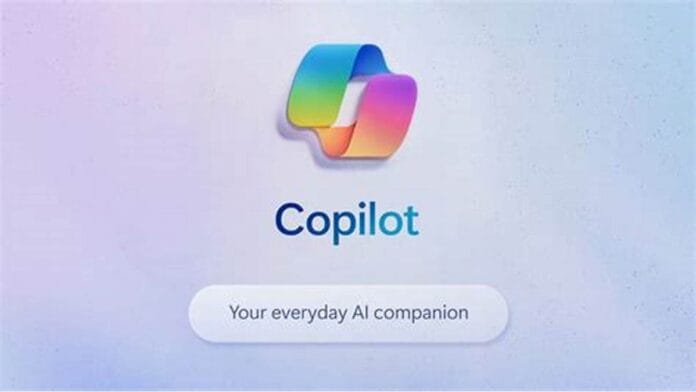Microsoft has implemented comprehensive privacy and security measures for Copilot, but organizations should understand both the protections and potential risks. Here’s what you need to know:
Core Privacy Protections
Enterprise Data Protection (EDP)
Microsoft 365 Copilot Chat prompts and responses are processed within the Microsoft 365 service boundary which offers enterprise data protection. Microsoft 365 Copilot is integrated into Microsoft 365 and adheres to all existing privacy, security, and compliance commitments to Microsoft 365 commercial customers.
Data Encryption and Security
We secure your data: We help protect your data with encryption at rest and in transit, rigorous physical security controls, and data isolation between tenants. Prompts are evaluated using GPU resources in Azure datacenters protected with Azure security and privacy controls.
Data Usage Commitments
Your data is private: We won’t use your data except as you instruct. Our commitments to privacy include support for GDPR, the EU regulations and other compliance frameworks.
Data Storage and Processing
Microsoft Cloud Boundary
Customer data, including Copilot inputs and outputs, is stored within the Microsoft Cloud trust boundary. However, in some scenarios, such as features powered by Bing and third-party copilot plug-ins, customer data might be transmitted outside the Microsoft Cloud trust boundary.
Data Sharing and Enhancement
When data sharing is opted in, Customer Data such as prompts and responses are shared with Microsoft to enhance product performance, improve accuracy, and address response latency. Organizations can control these settings through administrative policies.
Geographic Data Processing
Customer Data (except uploaded files) may be stored outside of the tenant Geo when data sharing is enabled, though uploaded files are not stored outside of the tenant Geo.
Security Controls and Protections
Built-in Security Features
Microsoft 365 Copilot operates with multiple protections, which include, but aren’t limited to, blocking harmful content, detecting protected material, and blocking prompt injections (jailbreak attacks).
Administrative Controls
Organizations can use Microsoft’s security controls, including sensitivity labels, data loss prevention policies, and access controls, to restrict what data Copilot can process. These tools help prevent sensitive information from being incorporated into Copilot interactions.
Data Retention and Compliance
Use Microsoft Purview retention policies to keep a copy of deleted Copilot conversations so they’re available to eDiscovery. Or, if you have a compliance requirement to delete data after a specific period of time, use retention policies to automatically delete Copilot prompts and responses.
Regulatory Compliance
GDPR and Privacy Regulations
Microsoft 365 Copilot explicitly mentions on its website that it complies with existing privacy and security regulations, including GDPR. However, Microsoft Copilot’s rapid adoption across multiple industry sectors has sparked debate and concerns around data privacy and compliance.
Privacy Impact Assessments
Businesses may start by conducting a privacy impact assessment that will give them insights into privacy gaps related to their data management and privacy practices when implementing Copilot.
Current Security Concerns and Risks
Congressional and Government Concerns
In March, the U.S. House of Representatives banned congressional staff from using Copilot due to concerns about data security and the potential risk of leaking House data to unauthorized cloud services.
Enterprise Security Risks
Microsoft Copilot security risks are significant for enterprises, with over 15% of business-critical files at risk from oversharing and inappropriate permissions. Recent research shows 67% of enterprise security professionals express concerns about data exposure.
Data Quality and Retention Issues
ROT data not only impacts the quality and accuracy of Copilot responses but also poses serious security and privacy risks. For instance, storing sensitive data longer than the given retention time can welcome serious regulatory fines.
Best Practices for Organizations
Data Classification and Labeling
With a robust data classification and labeling system, organizations can better control what information Copilot can access and process.
Privacy Controls Implementation
Organizations should:
- Configure appropriate data loss prevention (DLP) policies
- Implement sensitivity labels for confidential information
- Set up proper access controls and permissions
- Conduct regular privacy impact assessments
- Monitor data sharing and processing activities
Administrative Oversight
IT administrators should:
- Review and configure data sharing settings
- Implement retention policies aligned with compliance requirements
- Monitor Copilot usage and data access patterns
- Establish governance policies for AI tool usage
Key Takeaways
Microsoft has built comprehensive privacy and security protections into Copilot, but organizations must actively configure and manage these controls. The system inherits Microsoft 365’s security framework while adding AI-specific protections. However, the effectiveness of these measures depends on proper implementation and ongoing management by IT administrators.
Organizations should carefully evaluate their specific privacy and compliance requirements, conduct thorough risk assessments, and implement appropriate controls before deploying Copilot across their enterprise.

